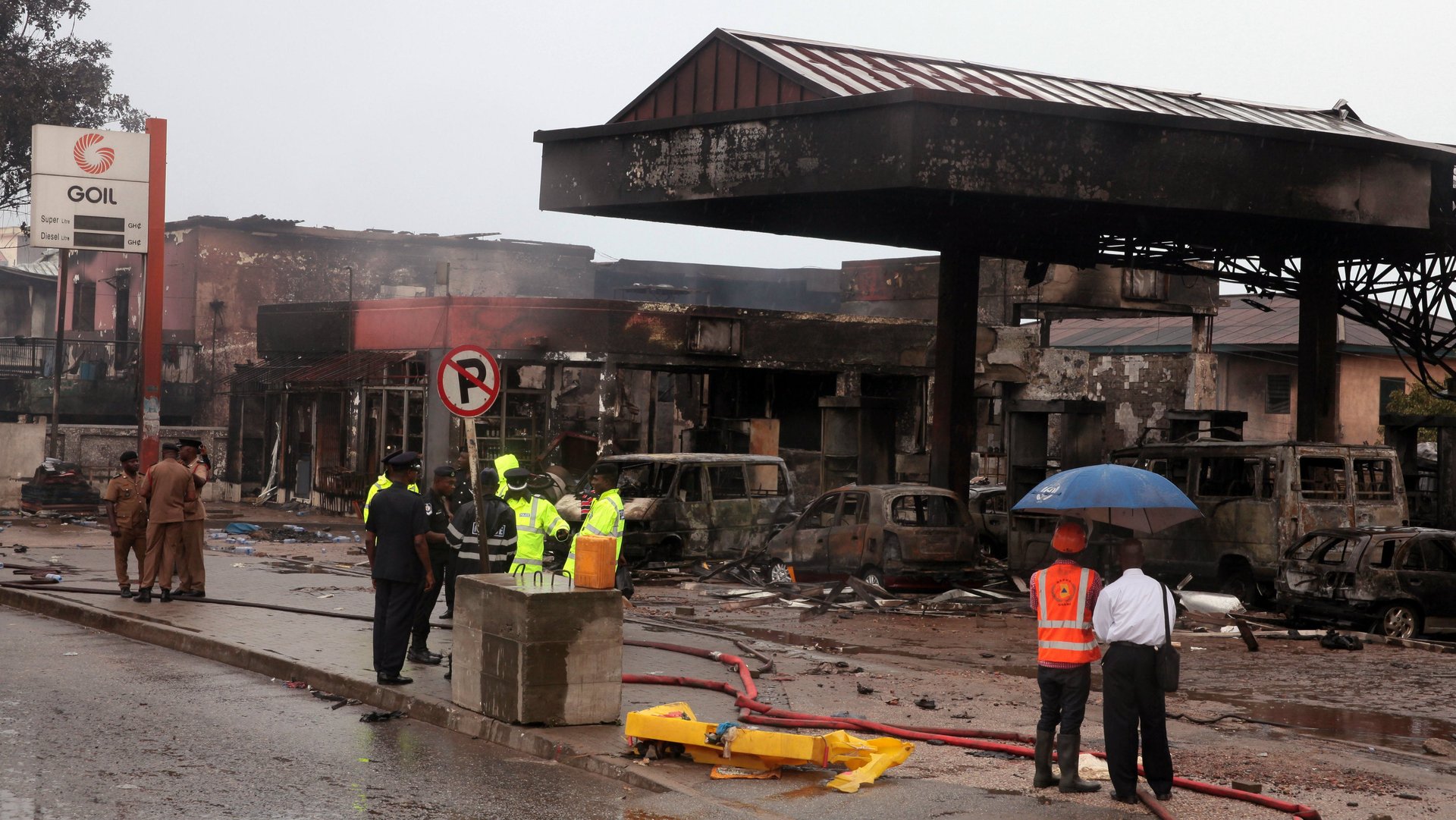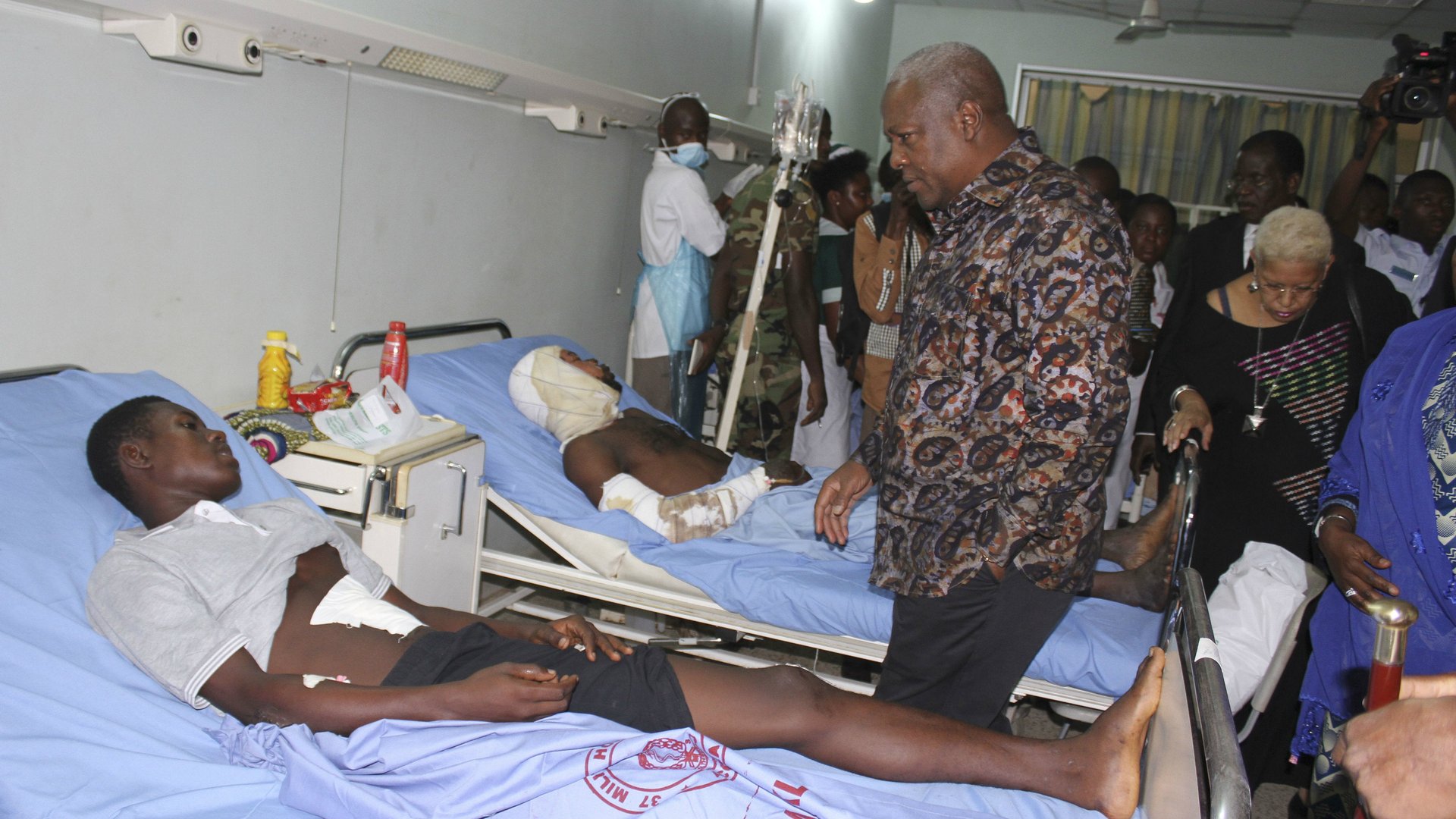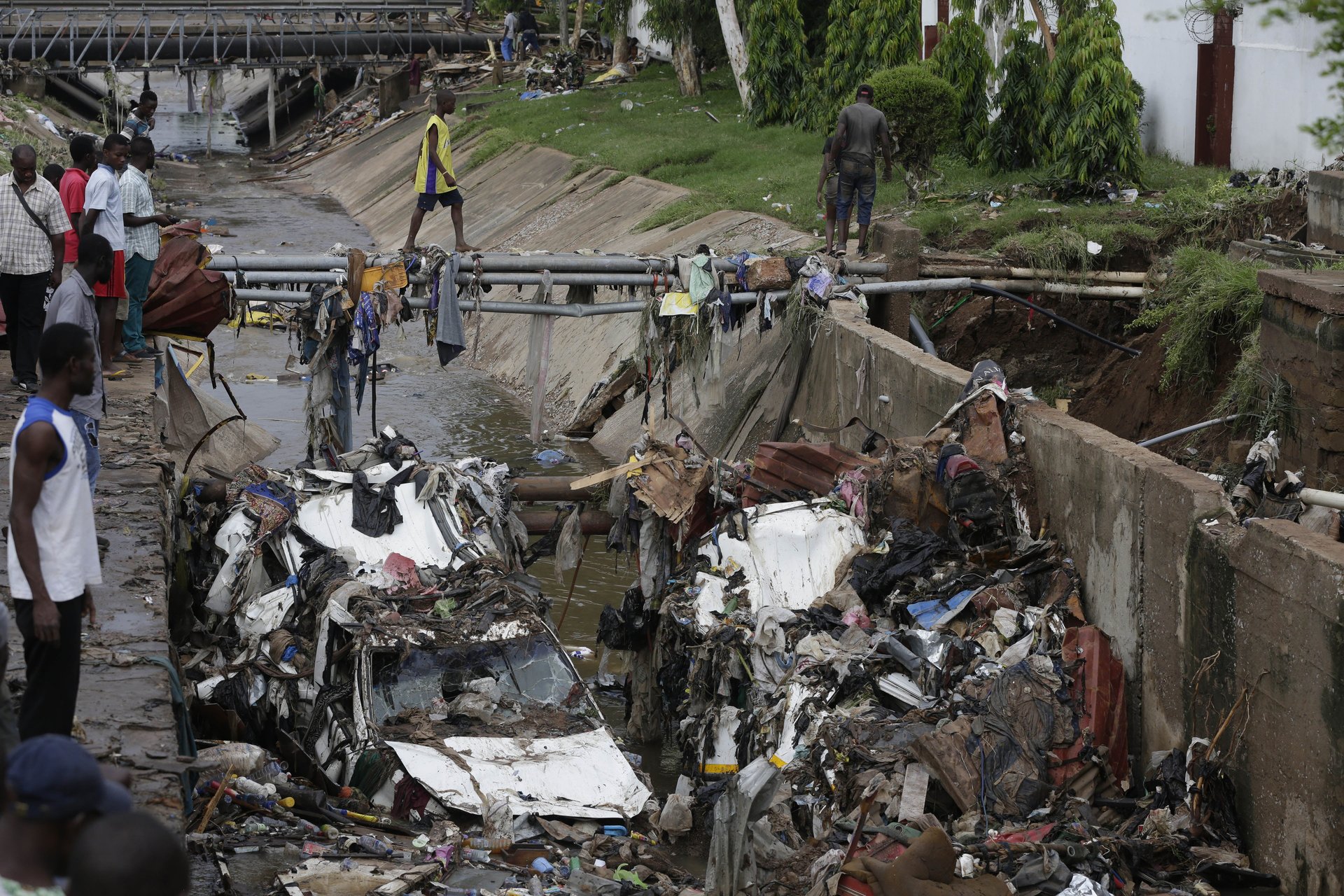Ghana was supposed to get $600m to fix flood-prone Accra–instead, disaster struck
Ghana is still in shock after more than 200 people died in last week’s gas station fire disaster in the capital city Accra.


Ghana is still in shock after more than 200 people died in last week’s gas station fire disaster in the capital city Accra.
But there’s also a palpable sense of frustration the government has done too little to fix the longstanding conditions that led to city-wide flooding after heavy rains–which in turn meant so many people were taking shelter at the Goil gas station at Kwame Nkrumah Circle.
Torrential rain flooded central Accra, and seeped into underground fuel storage tanks at a gas station. Investigators still aren’t sure what lit the slick of fuel, triggering what one witness described as ‘a storm of fire’ that engulfed everything in its path.
The next day, emergency services pulled body after body out of drains and had to rescue families trapped in flooded homes all over the city. Delegations from other West African countries toured hospitals and donated medicine, the #AccraFloods Twitter hashtag was an endless stream of horrific pictures and Ghanaian president John Mahama got choked up at a press conference where he blamed bad zoning and Ghanaians who filled roadside gutters with trash.

What he didn’t say was that the capital has no real storm drain or sewage system, beyond the colonial-era pipes that serve just 15% of the city. Accra’s four million residents rely almost entirely on a series of open sewers constructed in the 1970s, a few fetid rivers and a lagoon choked with about three storeys of silt and trash, which drains into the Gulf of Guinea. Every time a tropical storm happens at high tide, the lagoon backs up into the rivers and open sewers, flooding much of the city.
Remarkably, Accra’s authorities have received hundreds of millions of dollars over the past 20 years to begin fixing the problem. There was the Accra Waste Project, a series of Urban Environmental Sanitation Projects, and the $160 million Korle Lagoon Ecological Restoration Project, which was supposed to fix the flooding by removing the islands of rubbish choking the waterway and restoring it to its former glory: an azure expanse with tilapia as big as your arm.

A decade after that project ended, all that’s left is a two-storey hulk of concrete and machinery that was supposed to stop trash getting into the lagoon. It floods pretty much every time there’s a storm.
Then there was the biggest failed project of them all: the $595 million Accra Sanitary Sewer and Stormwater Drainage Alleviation Project. It would have been one of the biggest infrastructure projects in Ghana’s history, funded with a loan from the Export-Import Bank of the United States.
The plan was to build storm drains to replace the fetid open gutters all over the city. They were going to build a trash collection system so people would finally stop dumping everything in the nearest waterway. They were even going to refurbish one of Accra’s decrepit wastewater treatment plants, and build a new one. (Accra has several but they’re in various states of disrepair, so most of the raw sewage generated by the city of four millions is dumped on a public beach.) Importantly: they were going to remove tons of rubbish and silt from the Korle Lagoon to help ease the annual flooding.
There was a huge ceremony to mark the beginning of the project in 2013. One company started scooping trash out of the water. A short drive down the road, two different Chinese companies began work on two different wastewater treatment plants. Over a year later, when the city flooded again, triggering a cholera outbreak, Accra’s appointed mayor, Alfred Vanderpuije, said the money was coming: “Ex-Im Bank has already given their commitment to the project,” Vanderpuije insisted (audio, go to 8:40).
The only problem with this grand plan was that the money didn’t exist. Over a year after the sanitation project was launched, the Accra Metropolitan Assembly hadn’t actually applied for the loan. There was a preliminary commitment, an Ex-Im Bank spokeswoman told me, which “is not an authorization but is an indication that Ex-Im Bank would be willing to consider financing for the project.” No guarantees.
Then Ghana’s economy began to falter, and the city abandoned the project so quietly that the morning after this year’s floods, people were asking whether it was still happening.
Accra’s residents are starting to tire of the annual deluge of floodwater and sewage. Ghana’s capital city has more than doubled in size over the past 20 years, so the floods are getting more severe, claiming more and more casualties, and destroying millions of dollars worth of property. So now people want to know where the hundreds of millions spent on sanitation projects have gone.
The most popular theory is that when the money did exist, it was lost to corruption: they “chopped” the money.
The simplest explanation, however, is that sanitation has never been a priority for leaders in Ghana. A World Bank infrastructure expert who’s travelled Africa extensively told me Accra had some of the worst conditions, despite Ghana’s relative prosperity, because nobody in power cares. This may be why just days before this year’s disaster, Vanderpuije was named Africa’s Best Mayor at a conference in Accra.